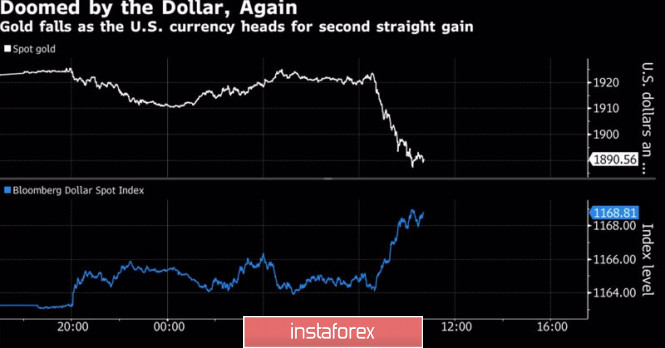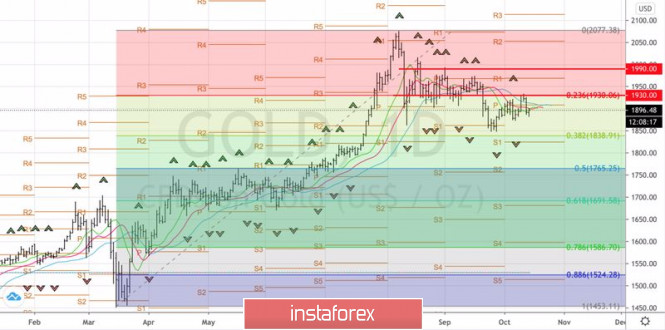
Gold continues to hang around the mark of $1,900 per ounce, while the arguments of its fans look unconvincing. According to RBC Wealth Management, the precious metal has postponed the hike to $2000, but its long-term prospects remain bullish. Failures in COVID-19 vaccine trials, political uncertainty, and a slow global economic recovery are allegedly playing into the hands of XAU/USD buyers. In my opinion, they work as one with the US dollar for being bearish factors for gold.
To make this convincing, you need to look at the dynamics of the precious metal and US stock indexes. In March, gold was caught in a wave of sell-offs amid the collapse of the S&P 500, as investors sought cash to support longs on stocks. In September, history repeated itself. The analyzed asset behaves as risky, which makes its use as a hedging tool for price risks of the investment portfolio ineffective. In fact, we need to understand what kind of environment we live in. It is inflationary. That is, the stock market is growing in the hope of accelerating CPI, and the precious metal has been used for centuries as an insurance against inflation. This is why it is directly correlated with US stock indexes.
Stocks are rallying on hopes of a new fiscal stimulus package that will boost the US economy and boost consumer prices. As a result, the real yield on Treasury bonds will fall, which is good news for the bulls on XAU/USD. By contrast, the failure of the White House and Congress to provide additional assistance will reduce the likelihood of accelerating inflation, which will be bad news for both the S&P 500 and gold. But it will help the US dollar.
Dynamics of Gold and US dollar:

The greenback gets support from uncertainty. According to a BofA Merrill Lynch poll, 61% of financial managers with $593 billion under management believe that Donald Trump will challenge the results of the presidential election. Recently, the market is increasingly hearing talk that Joe Biden's victory does not guarantee the rapid implementation of additional fiscal incentives. They say this is possible if the Democrats control both the White House and Congress, but many investors believe that the Republicans will not give up the Senate.
The lack of additional assistance is a reason for the correction of stock indexes and XAU/USD against the background of a decrease in the probability of inflation acceleration. Currently, the cost of hedging the risks of consumer price acceleration above 2% over the next five years exceeds the February premium by half, but the continued uncertainty will reduce the indicator and hit gold.
Technically, on the daily chart, there was a retest of the lower border of the shelf (trading range $1930-1990 per ounce) of the "surge and shelf" pattern. The inability of the bulls to break higher indicates their weakness. However, it makes sense to form medium-term sell or buy trades only after gold falls below $1860 or rises above $1960 (mid-shelf).
Gold, daily chart:
